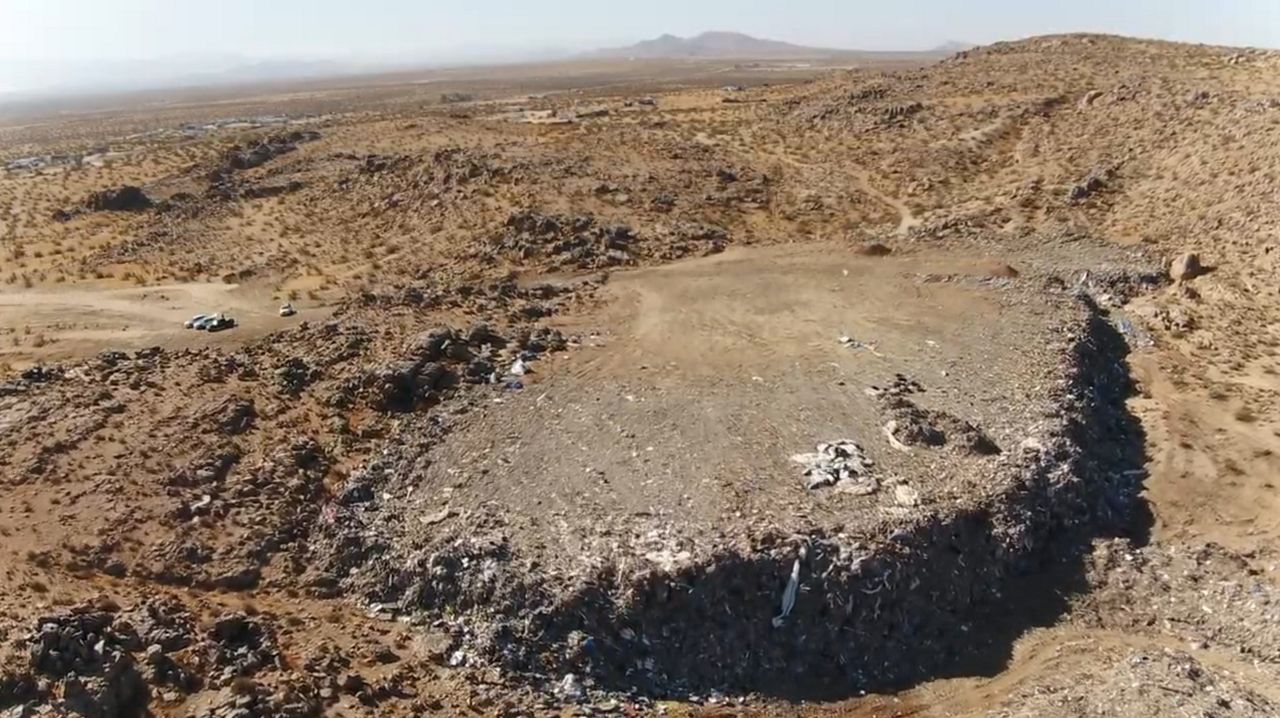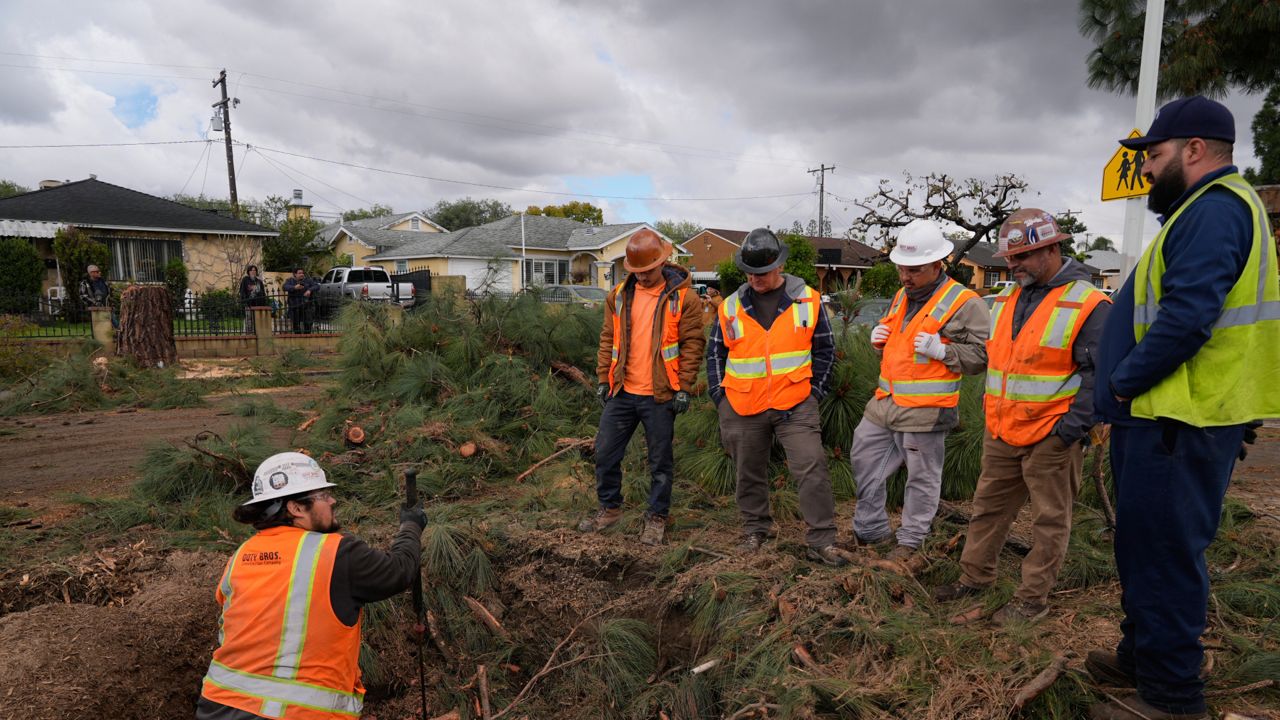As California prepares for a carbon-neutral future, SoCalGas is preparing to urge it along with a new hydrogen pipeline. A first-of-its-kind project for California, Angeles Link would supply renewable hydrogen to a variety of industries, from power plants and heavy-duty manufacturing to transportation fueling stations and energy storage.
“We believe this will be an anchor project that will kick off many different hydrogen projects,” SoCalGas Vice President of Customer Solutions Don Widjaja told Spectrum News. Not only could the pipeline help electric utilities generate clean power as they transition away from natural gas to renewable alternatives, it could help with resilience, since hydrogen can serve as energy storage. It would also support the nascent hydrogen fuel cell electric vehicle industry, including heavy-duty trucks.
“If we could displace all that diesel and clean the air and at the same time reduce the greenhouse gases in this area, we’re excited to be able to contribute to that as part of our goal,” Widjaja said.
Already SoCalGas has set a target of becoming carbon neutral by 2045, which is also the year the state of California has targeted to become net zero. As the natural gas provider for half of the state, SoCalGas has a large role to play in decarbonization if it can replace the fossil fuel that currently serves as its primary commodity with a renewable replacement: hydrogen. Hydrogen is more sustainable than fossil fuels because it can be produced renewably and emits only water vapor when generating electricity.
Despite its name, SoCalGas sees itself as an infrastructure company. “We’re agnostic to the field that we serve because we have a network of pipelines to supply our customers with natural gas today or renewable natural gas or hydrogen,” Widjaja said.
The company currently has more than a hundred thousand miles of pipeline stretching through its 24,000-square-mile service area from Visalia in the central part of the state to the Mexican border. The exact length or route for Angeles Link has not yet been determined, though Widjaja said, “we have opportunities to use maybe some of the right of ways that we already have with our system.”
One thing that is certain: the hydrogen that SoCalGas will carry through the proposed Angeles Link pipeline will be made renewably, with an electrolysis process that uses renewable energy to generate hydrogen from water.
“All the renewables today, they’re not in the LA basin,” Widjaja said. “A lot of the wind farms, a lot of the solar farms, they’re outside of LA, so the hydrogen is likely to be produced in those locations,” he said. “But the demand is here in LA, and today there’s no way to transport it in an efficient manner. The pipeline is one way to get there.”
Before the end of the year, the California Public Utilities Commission is expected to decide on whether to approve SoCalGas’s request to plan, permit and perform preliminary work for the proposed hydrogen pipeline. A spokesperson for the state’s utility regulator said SoCalGas is the only utility in the state to propose a pipeline dedicated to transporting hydrogen.
On Monday, the U.S. Department of Energy released a notice of intent to fund $8 billion to develop regional clean hydrogen hubs nationally, as called for in the Bipartisan Infrastructure Law President Biden signed last year. The so-called H2Hubs would create localized networks of hydrogen manufacturers, infrastructure and consumers in an effort to accelerate hydrogen’s use.
The $8 billion will be spent over the next five years to support the development of four or more H2Hubs that can demonstrate clean hydrogen’s production, processing, delivery, storage and use as a model for a clean hydrogen economy.
California is likely to be one of the four H2Hubs that the DOE has yet to pick. Already, it is home to the majority of hydrogen stations in the country. The state currently has 54 retail hydrogen fueling stations. Nine more are under construction, including locations in Seal Beach, Anaheim, Burbank and Santa Ana, all of which are expected to open this year.
Thirty more are in the permitting process — two thirds of which are in Southern California. Another ten have been proposed. By 2026, there will be about 200 hydrogen fueling stations throughout the state, according to the Governor’s Office of Business and Economic Development.
“We absolutely need hydrogen in the mix, and we need cost-effective ways to get hydrogen from where it’s produced to where it will be consumed,” said Tyson Eckerle, deputy director of zero-emissions vehicle market development for GoBiz. “Pipelines are a really key component of the mix.”
Right now, most of the hydrogen provided to retail fueling stations is carried in diesel tanker trucks, Eckerle said, though efforts are being made to transition them to big rigs fueled with hydrogen fuel cells to decrease their emissions footprint.
Getting people to adopt hydrogen fuel cell electric vehicles, “a lot of it comes down to cost, which relates directly to scale, which is why pipelines are so important,” Eckerle said.
Part of achieving scale is “big adoption in the heavy-duty truck sector” to help drive down costs. Lowering the cost of the fuel then enables more adoption of hydrogen fuel cell electric vehicles on the passenger side. When passenger vehicle adoption increases, that in turn helps bring down the cost of the fuel cells.
“Hydrogen at scale can be very economically competitive,” he said. “The trick is getting it to scale.”
The success of getting to scale all hinges on having people signed up to buy hydrogen, which in turn hinges on having hydrogen readily available. Thus, Angeles Link.
“We can launch the market without a pipeline, and that’s what we’re doing,” Eckerle said of Gov. Gavin Newsom’s goal to achieve 100% zero emissions new passenger vehicle sales by 2035 and 100% zero-emissions operations of heavy-duty vehicles by 2045.
While battery-electric vehicles now account for 1.75% of registered light-duty vehicles in the state, according to the California Energy Commission, hydrogen fuel cell vehicles have been slower to catch on, due to their higher cost as well as a lack of fueling stations. There are currently just three hydrogen fuel cell electric vehicles on the market: the Toyota Mirai, Hyundai Nexo and Honda Clarity. Combined, they account for 0.034% of registered vehicles, according to the CEC.
“There’s 30 miles of pipeline already at the Port of Long Beach, so we can take advantage of that existing infrastructure, but to get to scale, pipelines are crucial,” Eckerle said. “It’s one of the best ways to move a lot of energy in an economically efficient way.”
Federal investment in a California H2Hub is likely in 2024 and could not only be built out by 2026, but economically self-sufficient by then, Eckerle anticipates. By 2026, tens of thousands of hydrogen fuel cell passenger vehicles will be on California roads and thousands of hydrogen fuel cell trucks and buses will be “in active development with signed contracts,” he said.
At the end of 2021, 10,127 hydrogen fuel cell passenger vehicles are operating on California roads, and a small handful of hydrogen heavy-duty trucks are operating at the Port of Los Angeles.
The California Public Utilities Commission approval of the SoCalGas Angeles Link “could be two, three, four years out before we could even start digging the trenches for the pipeline, but we have to start somewhere,” Widjaja said. “We’re taking a very bold initiative. We think we are the right company to build this. As our CEO likes to say, we want to shape the future, and this is one way of us shaping the future.”
As part of its NetZero 2045 climate commitment, SoCalGas plans to replace its fleet with 100% zero emissions vehicles by 2035. It is also converting some of its heavy-duty trucks from diesel to renewable natural gas generated from captured methane, Widjaja said. It currently has 50 Toyota Mirais in its fleet. Last September, it partnered with Hyzon Motors for hydrogen-powered fuel cell electric utility trucks.
“SoCalGas is one of the most aggressive natural gas companies not only here in the U.S. but around the world in terms of their pursuit of renewable hydrogen,” said California Fuel Cell Partnership Spokesperson Keith Malone. “Every natural gas company around the globe recognizes the need to decarbonize their pipelines. Hydrogen is one of those tools in the decarbonization toolbox. It’s a Swiss army knife.”










